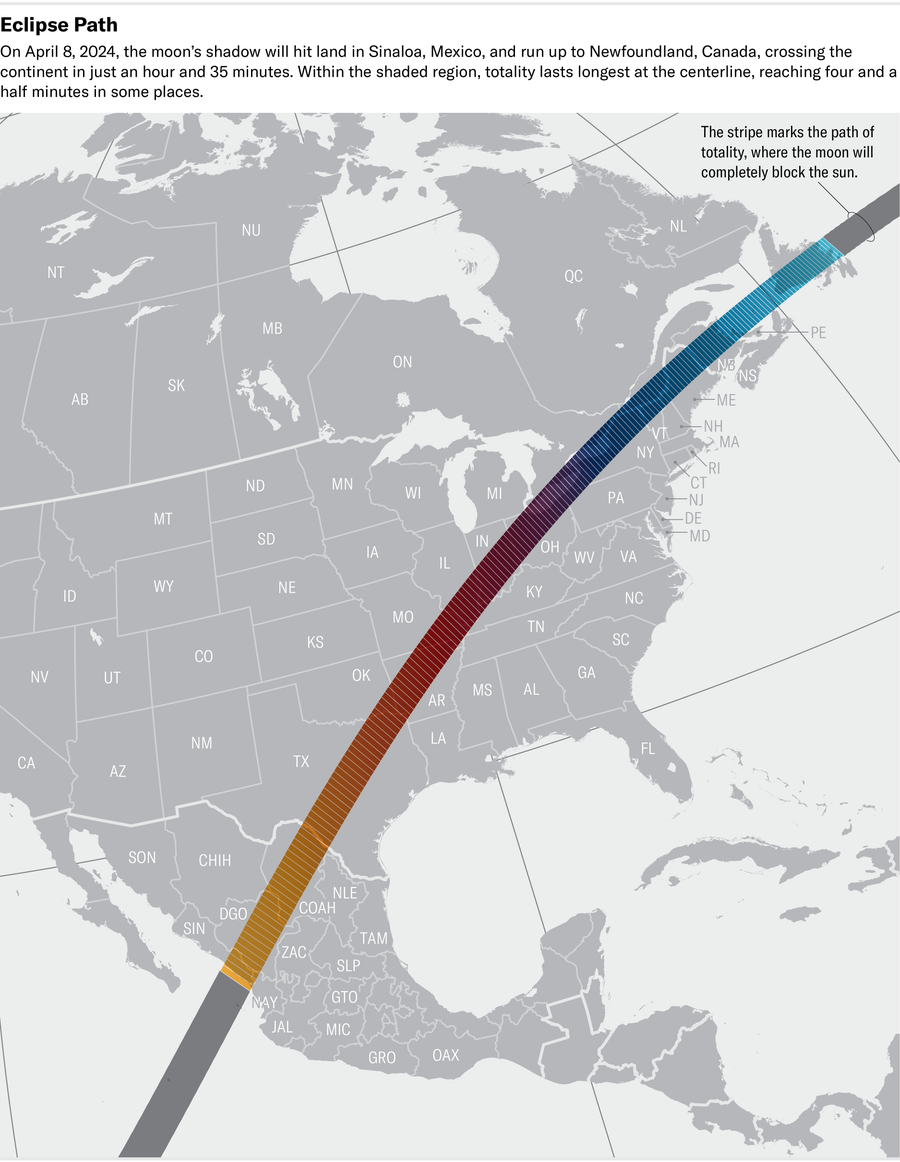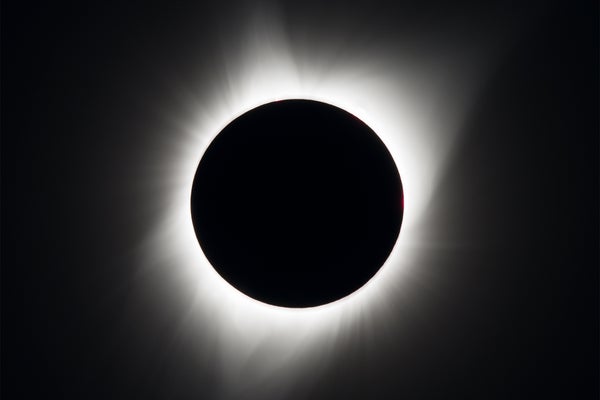This article is part of a special report on the total solar eclipse that will be visible from parts of the U.S., Mexico and Canada on April 8, 2024.
A total solar eclipse that will occur this April should be spectacular in many ways, even for those who were lucky enough to catch the sun’s show in 2017.
With total solar eclipses occurring only every 18 months or so and many visible only over oceans or equally inaccessible areas, any such eclipse over a densely populated region is a cause for celebration. But 2024’s total solar eclipse over North America will happen when the sun is near the peak of its activity cycle. That’s in stark contrast to the last great American eclipse, which occurred in August 2017, when the sun’s activity was approaching a minimum.
On supporting science journalism
If you're enjoying this article, consider supporting our award-winning journalism by subscribing. By purchasing a subscription you are helping to ensure the future of impactful stories about the discoveries and ideas shaping our world today.
“It will be fun to compare the two,” says Sanjay Gosain, a solar scientist at the National Solar Observatory in Boulder, Colo.
At the magic moment of totality in 2017, when the moon was aligned precisely over the disk of the sun’s visible surface, it was briefly safe to look at the convergence with bare eyes—and to catch the stunning sight of our home star’s atmosphere, or corona, sketching a shallow smear of white around the moon’s blackness, marked by a few shining spikes.
This April a similar total solar eclipse will grace a different swath of North America—including Mexico, Texas, Arkansas, Indiana, Ohio, upstate New York, Maine, and more. But the elusive view of the sun’s corona won’t look the same because this eclipse comes near the opposite end of our star’s 11-year activity cycle.

Credit: Katie Peek; Source: NASA (eclipse track data)
“The eclipse that we have coming up in 2024 is going to be a very different eclipse from what we saw in 2017 because this corona that we see is going to have much more structure,” says Lisa Upton, a solar scientist at the Southwest Research Institute in Boulder, Colo.
The sun’s activity, which scientists measure by the number of dark patches known as sunspots on the star’s surface, is governed by the solar magnetic field, which knots and unwinds itself every 11 years. When the sun is at its quietest, with nary a sunspot, its magnetic field is strong and orderly, with a tidy magnetic pole at the star’s top and bottom. When the sun is at its most active, with a parade of sunspots dancing across its surface, its magnetic field is in a lull, and each pole of the star sports nearly no magnetic field at all.
The current bevy of sunspots and the disappearance of magnetic poles suggest that solar maximum is either already upon us or fast approaching, says Madhulika Guhathakurta, a solar scientist at NASA. “The shape of the corona changes dramatically as a function of the solar cycle,” Guhathakurta says. This time around, scientists expect that the corona will appear larger and have more outflows and spikelike structures than in an eclipse during quieter solar conditions.
Understanding the sun’s activity carries much more serious consequences than simply enjoying a variety of coronal displays. Solar activity ripples out through the solar system and can interfere with communication and navigation satellites that orbit our planet—and can even interrupt power grid operations on its surface. Right now, these consequences come with little warning, but scientists are working to hone their ability to predict this “space weather.”
Since the 2017 eclipse, several scientific instruments dedicated to studying the sun’s corona and magnetic field have begun operations. In particular, NASA dispatched the Parker Solar Probe to fly deep into the sun’s corona, the European Space Agency launched its Solar Orbiter spacecraft to peer at the sun’s poles, and the National Solar Observatory opened the Daniel K. Inouye Solar Telescope on the Hawaiian island of Maui.
Yet a total solar eclipse remains a priceless opportunity for studying the sun, Guhathakurta says. That’s because no instrument can observe the corona in visible light as close to the sun’s surface as is feasible during an eclipse. And those are exactly the kinds of observations scientists need to better understand how the star’s corona and magnetic field interact—and how consequences of these phenomena can affect satellites orbiting Earth. This is part of why scientists flock to every total eclipse, no matter the sun’s activity, and hope others do as well. “Total solar eclipses are always exciting,” Guhathakurta says. “It will change you.”
